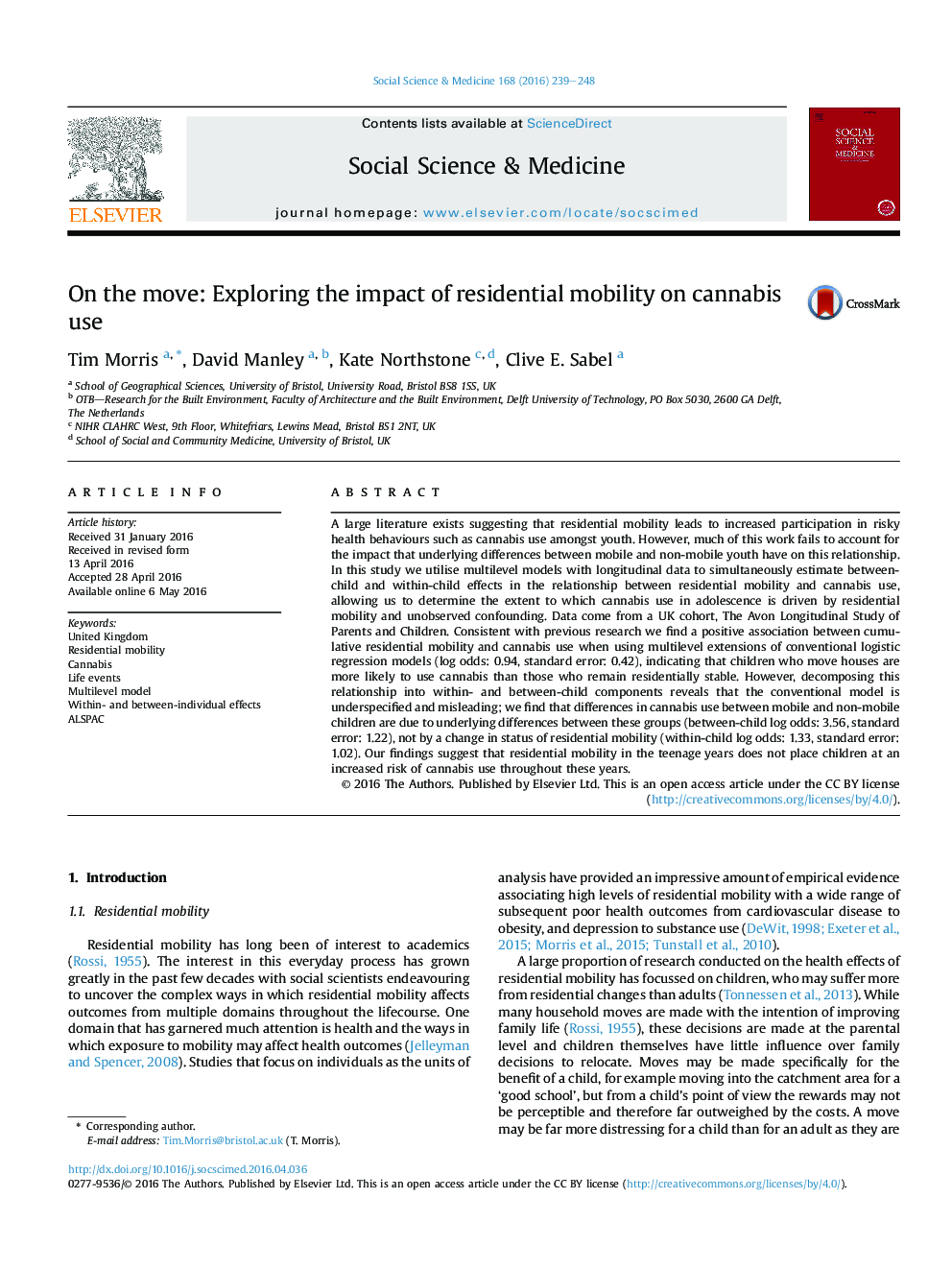| Article ID | Journal | Published Year | Pages | File Type |
|---|---|---|---|---|
| 5046911 | Social Science & Medicine | 2016 | 10 Pages |
â¢We decompose the relationship between residential mobility and cannabis use.â¢Bias due to unobserved confounding is examined using a novel analytical method.â¢Residential mobility is associated with increased cannabis use in adolescence.â¢Decomposing this association reveals that unobserved confounding drives results.â¢Results suggest that residential mobility does not lead to increased cannabis use.
A large literature exists suggesting that residential mobility leads to increased participation in risky health behaviours such as cannabis use amongst youth. However, much of this work fails to account for the impact that underlying differences between mobile and non-mobile youth have on this relationship. In this study we utilise multilevel models with longitudinal data to simultaneously estimate between-child and within-child effects in the relationship between residential mobility and cannabis use, allowing us to determine the extent to which cannabis use in adolescence is driven by residential mobility and unobserved confounding. Data come from a UK cohort, The Avon Longitudinal Study of Parents and Children. Consistent with previous research we find a positive association between cumulative residential mobility and cannabis use when using multilevel extensions of conventional logistic regression models (log odds: 0.94, standard error: 0.42), indicating that children who move houses are more likely to use cannabis than those who remain residentially stable. However, decomposing this relationship into within- and between-child components reveals that the conventional model is underspecified and misleading; we find that differences in cannabis use between mobile and non-mobile children are due to underlying differences between these groups (between-child log odds: 3.56, standard error: 1.22), not by a change in status of residential mobility (within-child log odds: 1.33, standard error: 1.02). Our findings suggest that residential mobility in the teenage years does not place children at an increased risk of cannabis use throughout these years.
